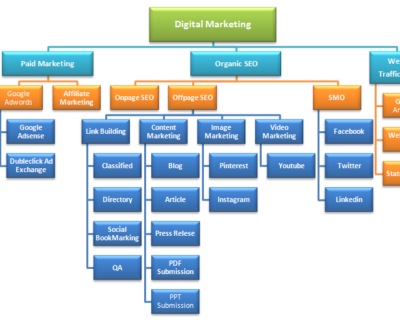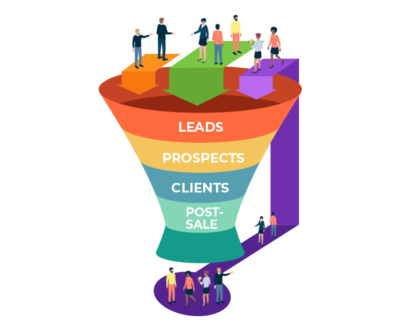What is the Difference Between Organic Traffic and Direct Traffic
- July 26, 2022
- Digital Marketing, Google Ads, Lead Generation, Marketing, Physical Marketing, SEO, Traditional Marketing
Direct operation vs. organic traffic
If you’re just looking for a nominal answer to “direct traffic vs organic traffic”, then organic traffic is any traffic that comes from search engines and is earned, not paid for. Direct traffic is any traffic that does not come from the referring website. You can find more context in the video:
Most people think of direct traffic when visitors physically type your URL into their web browser, but there’s a little more to it than that. If you want to dig deeper and see where all your traffic is coming from, keep reading. To really understand the difference between direct traffic and organic traffic, it’s worth understanding how all the traffic sources to your website are classified in analytics tools like HubSpot or Google Analytics.
Types of traffic sources
Most website analytics tools will organize your traffic sources into the following categories:
Direct operation
As we mentioned, direct traffic is categorized as traffic that does not come from the referring website. If the traffic is from an unknown source, it will likely be categorized as direct traffic as well.
Organic traffic
Organic traffic is any traffic that comes to your website from a search engine but is not paid for. Any organic traffic will be a result of your inbound marketing and SEO efforts. Traffic from paid search
Paid search traffic is any traffic that comes from a paid search campaign you run on a search engine like Google or Bing.

Social traffic
Any traffic that comes from social media websites such as LinkedIn, Twitter, Facebook or Instagram.
Email traffic
If you properly tag your email campaigns with email parameters, all traffic that comes from email to your website will appear as email traffic.
Reference operation
Traffic that comes to your website from any other website that is not a social media platform or search engine. Someone who clicks to your website from a hyperlink on another blog is considered referred traffic. Other
If you have traffic that doesn’t fall into the above categories or is specifically labeled as “other,” it will fall into that category.
Now that we have a clear understanding of all the different types of traffic sources, let’s explore two of the most important: direct traffic and organic traffic. Let’s start with direct shipping, because frankly, it’s a bit complicated.
Understanding direct traffic
Direct traffic should be any traffic that comes directly to your website. This means anyone who types your URL into their web browser or clicks to your site from a link on the brand. Unfortunately, direct traffic is not so clear. This experiment conducted by SearchEngineLand and Groupon revealed that up to 60% of traffic that is considered direct traffic is actually organic traffic.
How does it work?
Browsers don’t always report where visitors come to a website from. If your analytics tool can’t determine where the traffic is coming from, it will just assume it’s direct traffic. Because this visitor has no referrals, your analytics don’t know where they came from and automatically put them in the direct traffic bin.
Why should I care if my direct traffic is miscategorized?
Good question. Does it matter that some of your traffic is not properly classified? What’s the point of knowing where your traffic is coming from and doing everything you can to minimize fake “direct traffic” visitors? The answer is data. Every digital marketer knows that the best way to improve your marketing tactics and get more qualified leads is to first know where and why your leads are coming from. If you don’t know where the majority of your direct traffic is coming from, you’re missing out on a huge marketing opportunity. You can’t see what keywords visitors are clicking on or what terms they’re searching for.
So where does my direct traffic come from? If your direct traffic isn’t truly direct, what is? Well, the internet isn’t perfect. In order for your web analytics tool to make accurate recommendations for every page visit, every little aspect of the link needs to be perfectly crafted, and that doesn’t always happen. Here are some specific reasons why you may experience high direct traffic numbers:
HTTPS → HTTP Redirection
If you haven’t secured your website yet, you have an HTTP website. This means you won’t see any traces of visitors coming from a secure HTTPS site. This is a feature of the secure protocol and is actually an easy fix. You only need a third party SSL certificate and you can update your website to make it secure. You can then see all the necessary referral information from visitors who come to your site from other secure sites.
Bad redirects and missing or broken tracking codes
Another big reason for wasted direct traffic is that something isn’t working on your end. Maybe you forgot to put the tracking code on the new landing page. Anyone who clicks from this landing page to another page on your website will appear as a new user in Google Analytics when they go to the second page. To Google, it looks like you are referring your own visitor. If this happens and your domain is blocked, Google will automatically move the traffic to the direct traffic bin. The same thing happens when your meter codes fail or break. Incorrect recommendations can be blamed in the same way. If you use anything other than SEO best practices for your redirects, you risk getting UTM parameters. Complex referral chains can erase the referrer’s data, making for more direct traffic for you.
Traffic from mobile apps, desktop software and some email clients
Unfortunately, sometimes there is no way to avoid direct traffic without being direct. Many mobile applications, desktop software programs, and some email clients such as Outlook simply do not transmit referrer information. You can recognize an email problem when you see an increase in direct traffic after sending a large email campaign, but it can be difficult to identify traffic that comes from mobile apps and desktop software.
Legal direct traffic
And sometimes some of your direct traffic is direct. Maybe you write a great blog that people bookmark, or maybe you have a good reputation in your area and people go directly to your website. If you don’t block your employees’ IP addresses, you can get direct traffic to your analysts from their web browsing. Direct traffic is a real source of traffic, so it’s important to keep in mind that some direct traffic visitors may navigate to you.
Several factors contribute to unnecessary direct traffic. While it’s the most common and easiest to identify, you can still see direct traffic from offline sources, people sharing your page through instant messaging apps like Facebook Messenger, and more. While you can’t answer all of these cases, there are some that you can fix to get the best information about your site visitors, what they want and where they’re coming from.
How do I resolve miscategorized direct traffic? Moz has a great complete guide to direct traffic in Google Analytics that will not only show you where your direct traffic is coming from, but also how to improve it. Go there for detailed specific policies to follow to correct any concerns you have with direct traffic. Right now, the two best ways to make sure you’re doing everything you can to handle unnecessary direct traffic are:
Make sure your website is using HTTPS
If your website has an HTTP URL, you are missing out on referrals that can tell you a lot about your website visitors. Migrating to an HTTPS website will ensure that you get the most referral traffic possible and will also help you stay ahead of the curve.
Main campaign branding
When it comes to direct traffic, you can only control what you can control. You cannot control browsers that come from mobile apps or non-HTTPS sites. You can control the tagging of your campaign. The better you tag your campaigns, the better analytics you’ll see from new website visitors. Check out Moz again for a detailed approach.
It is important for any marketer or website owner to understand the difference between direct traffic and organic traffic. We hope this blog has helped you identify the key differences between the two and given you a bit of context behind some immediate traffic issues. If you have any further questions about analyzing your website’s traffic sources, please contact the Evenbound team. Our SEO experts are happy to answer all your questions.
Understanding organic traffic
As we mentioned before, organic traffic is any traffic that comes to your website from search engines that is not influenced by paid advertising. Not sure what it looks like? Check out our SERP Anatomy for a visual guide to where your organic traffic is coming from.
How do I get organic traffic?
Organic traffic is generated by your ranking on search engine results pages. The higher your website ranks for search terms related to your business, the more organic traffic you will see. Most inbound marketing tactics and strategies are created to increase search engine rankings to increase organic traffic.
Organic traffic is also driven by SEO or search engine optimization. The more search engine optimized your website is, the better it will rank for the search terms entered into Google by your ideal customers. Check out this case study for some insight on how SEO can help drive serious organic traffic and qualified leads.

What is the biggest difference between direct and organic traffic?
The biggest difference between direct and organic traffic has to do with user intent. If you have a lot of organic traffic, it means you are doing a good job of developing your digital presence for the search engines to care about. You will rank high for specific search terms, which increases traffic to your website. If you have a lot of direct traffic, you suffer from some of the issues we mentioned above, or you have a lot of brand awareness in your industry.
Example situation
Let’s say you’re looking for running shoes. When you’re ready to make a decision and are extremely loyal to Nike shoes, enter Nike.com in your web browser and make your purchase. This is a good example of quality direct traffic.
If you’re not sure which shoes are right for you—say, you’re new to running or don’t really like Nike shoes—type “best running shoes for beginners” into a Google search. If you click on one of the top results that isn’t an ad, that’s organic traffic to that site.
- Digital Marketing, google ads, Lead Generation, Marketing, off page optimization, off page seo, off page seo checklist, off page seo kaise kare, off page seo kya hai, off page seo practical, off page seo step by step, off page seo tutorial, on page and off page seo, on page optimization, on page seo, on page seo and off page seo, on page seo tutorial, on page seo vs off page seo, Physical Marketing, SEO, seo off page, seo on page off page, Traditional Marketing, what is off page and on page seo, what is off page seo
About us and this blog
We are a digital marketing company with a focus on helping our customers achieve great results across several key areas.
Request a free quote
We offer professional SEO services that help websites increase their organic search score drastically in order to compete for the highest rankings even when it comes to highly competitive keywords.
Subscribe to our newsletter!
More from our blog
See all postsRecent Posts
- What are Web Stories and their importance? July 30, 2022
- What are Paid Ads and Advantages of Paid Ads? July 29, 2022
- How Web 2.0 is Different from the Web 3.0? July 28, 2022















